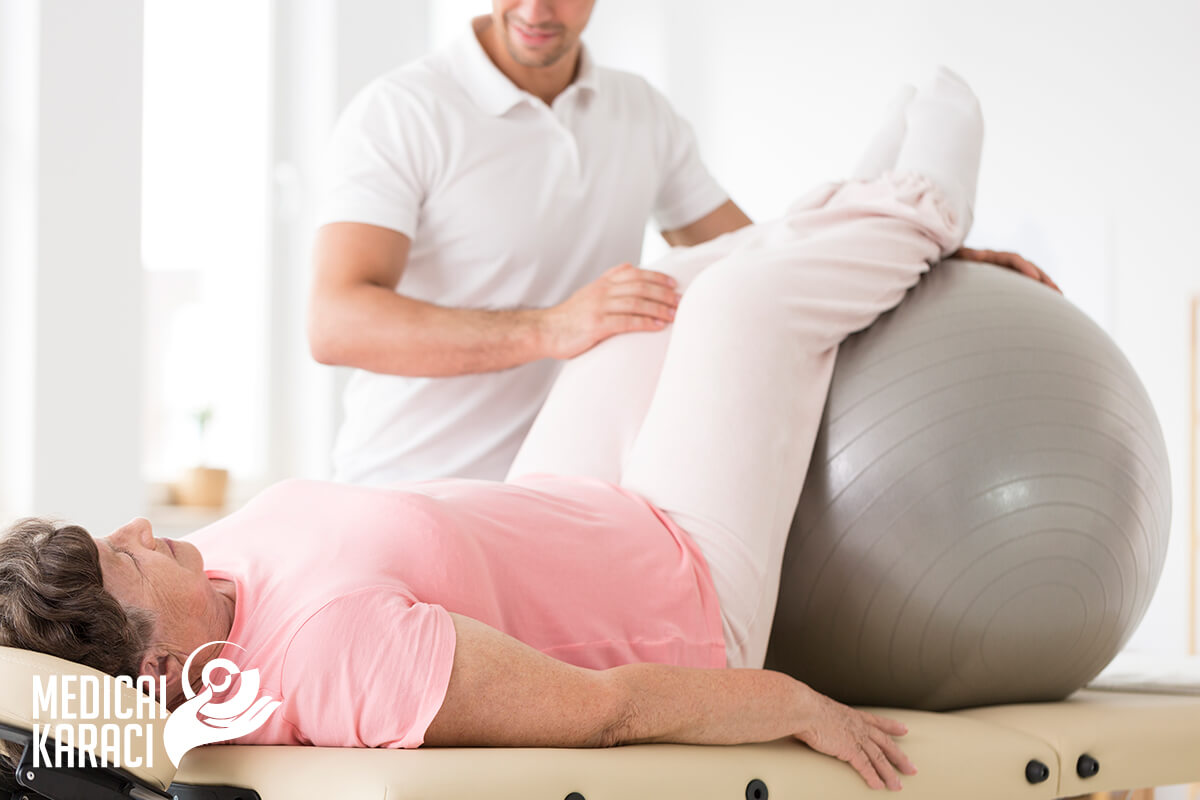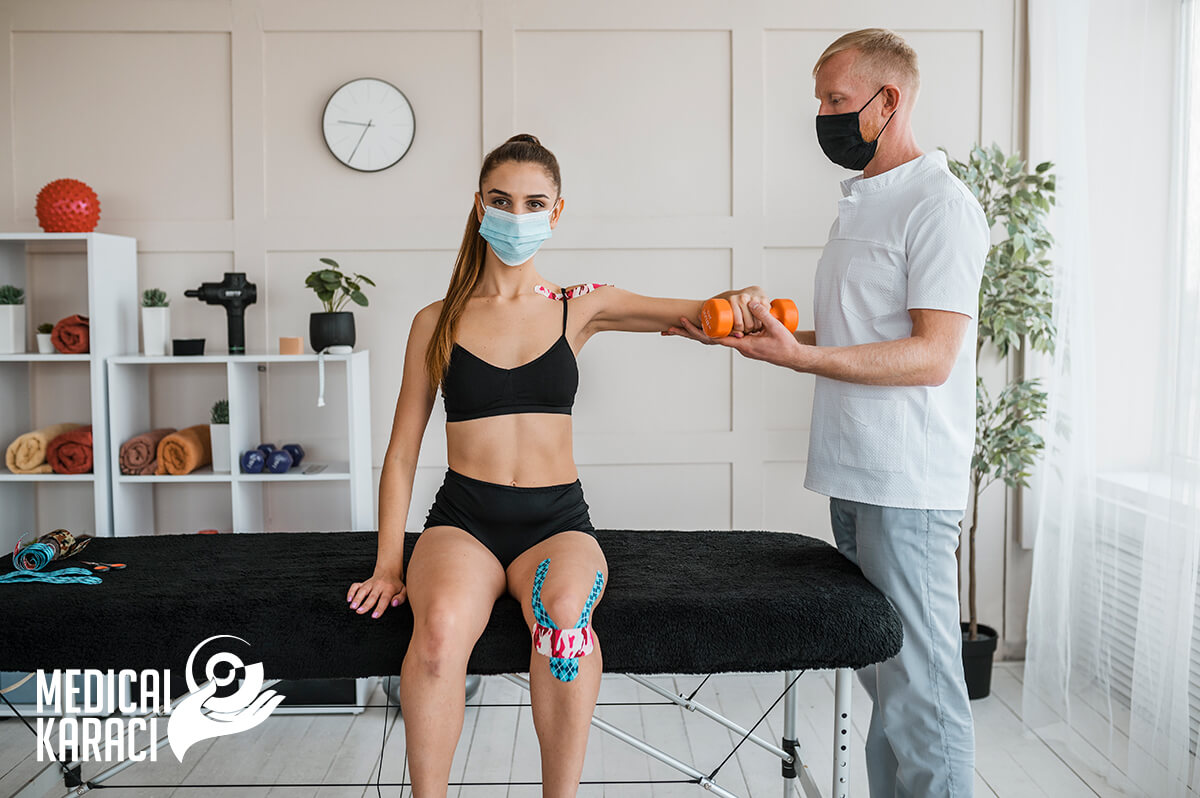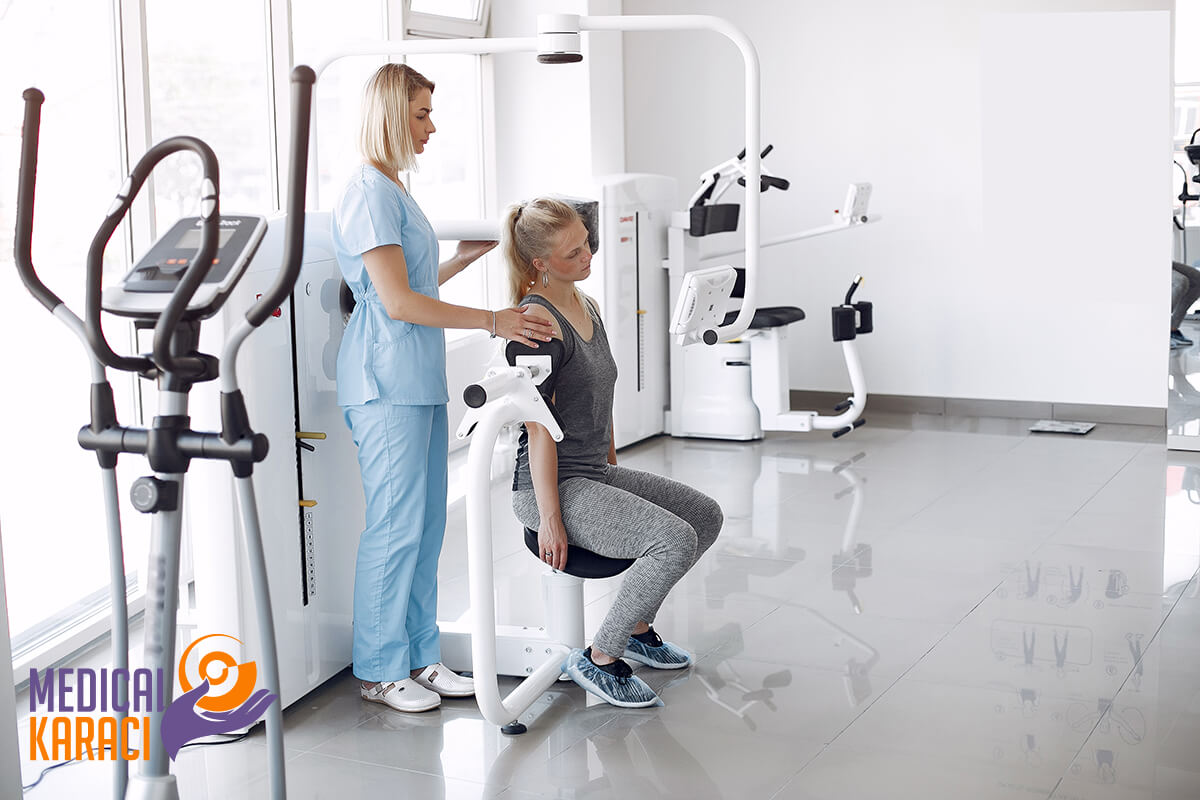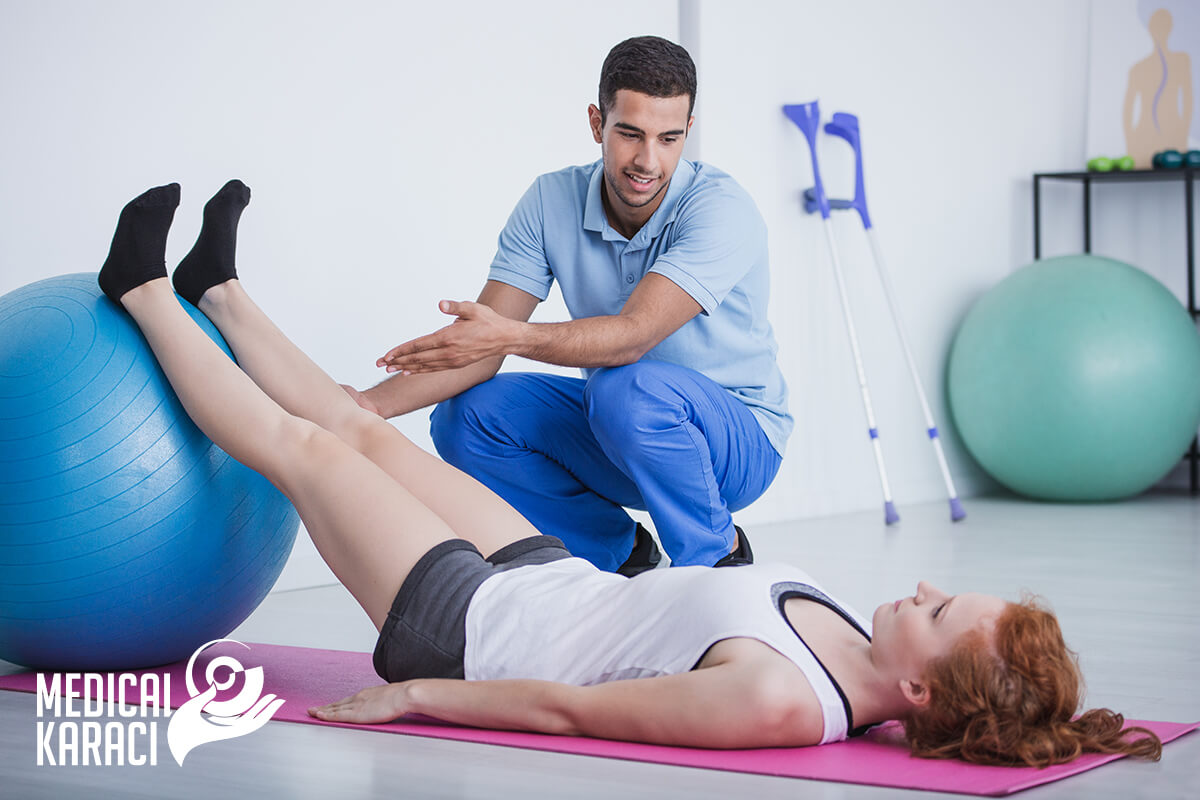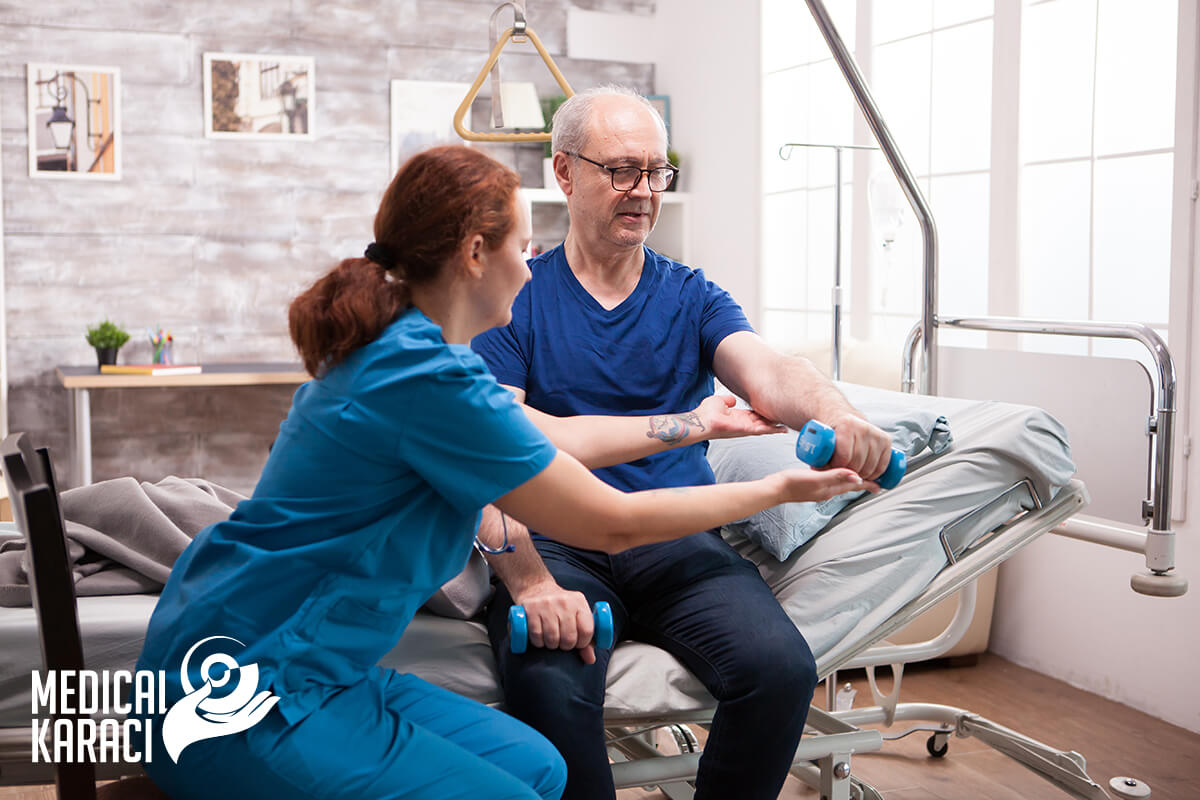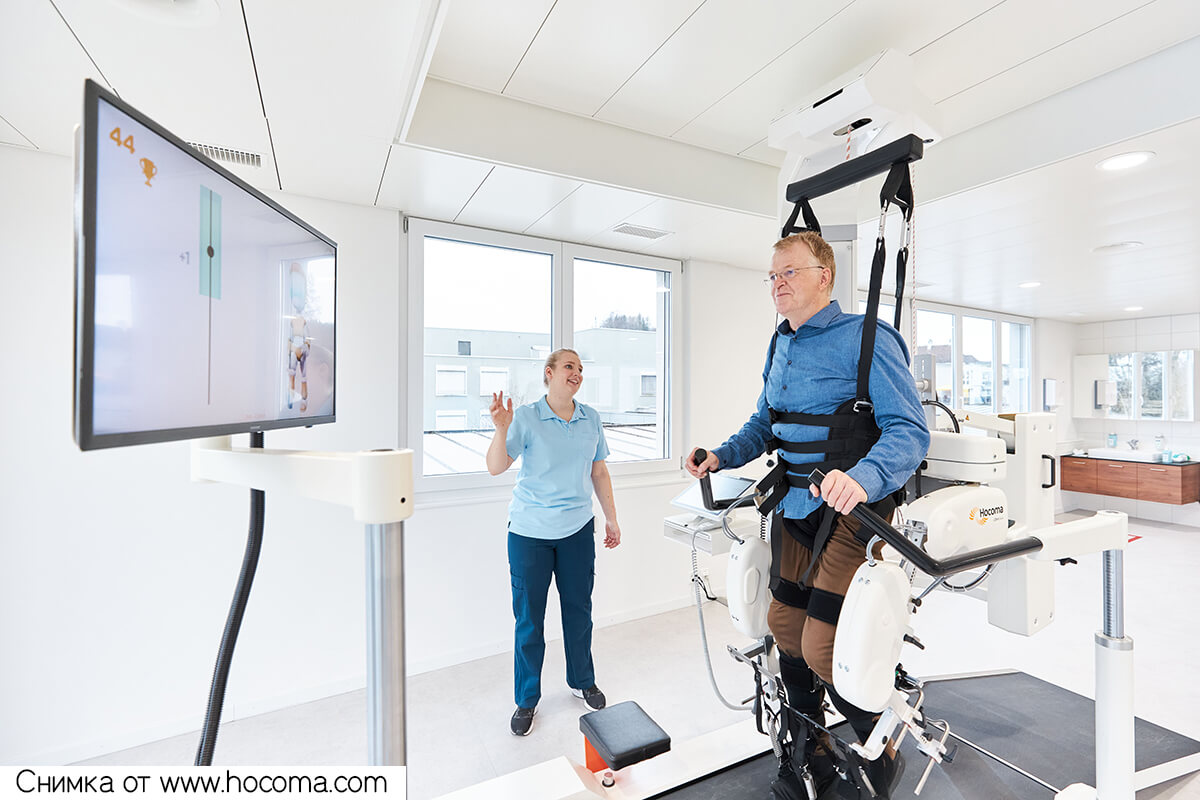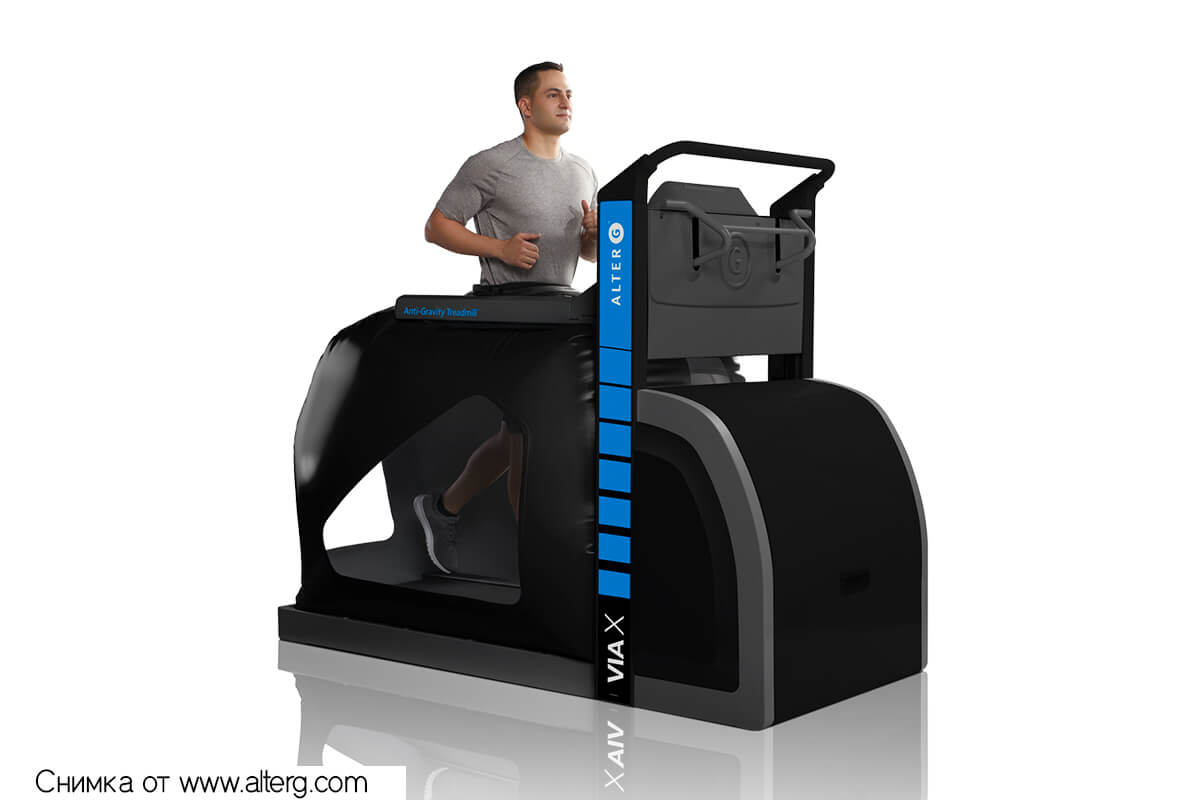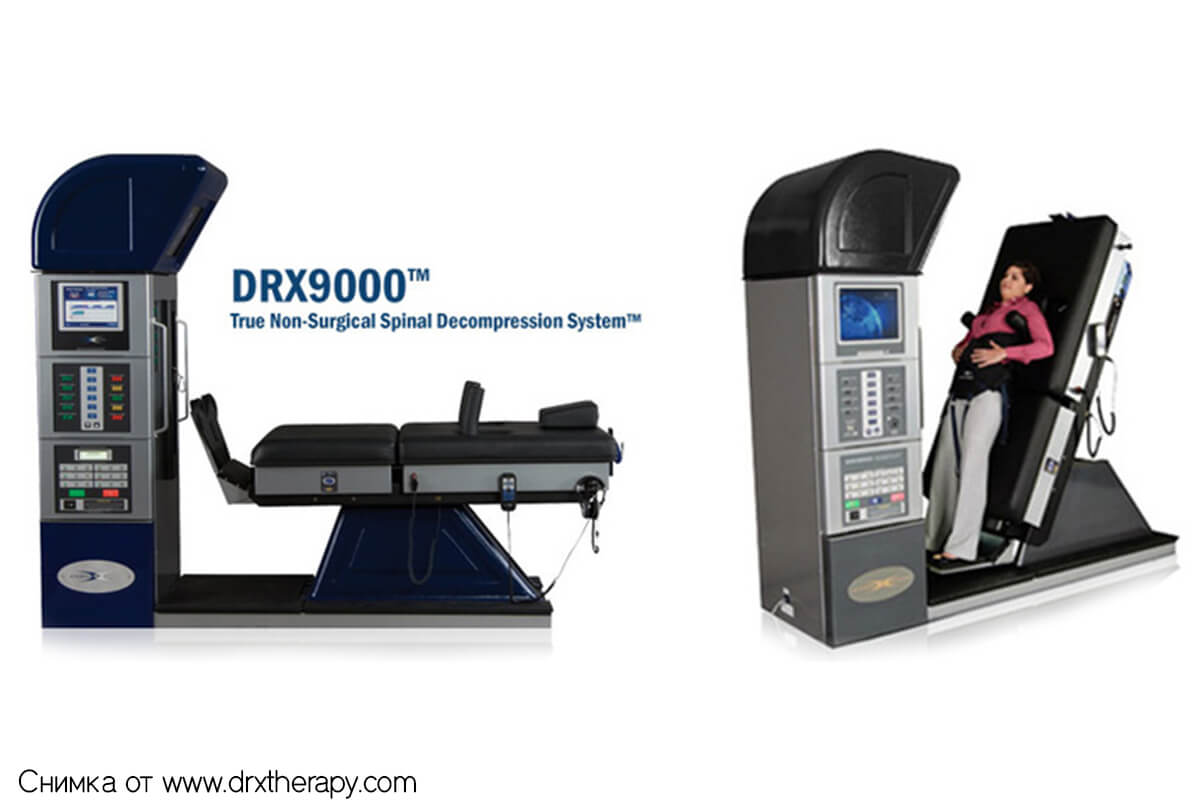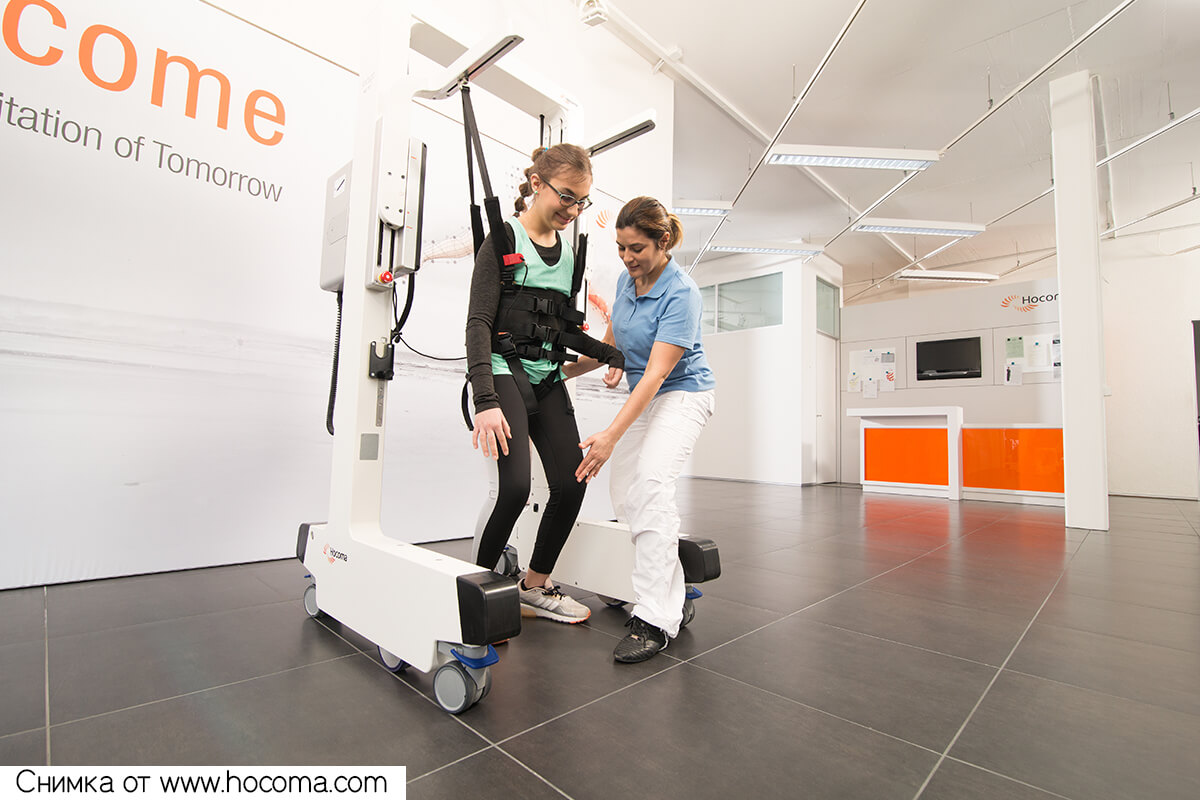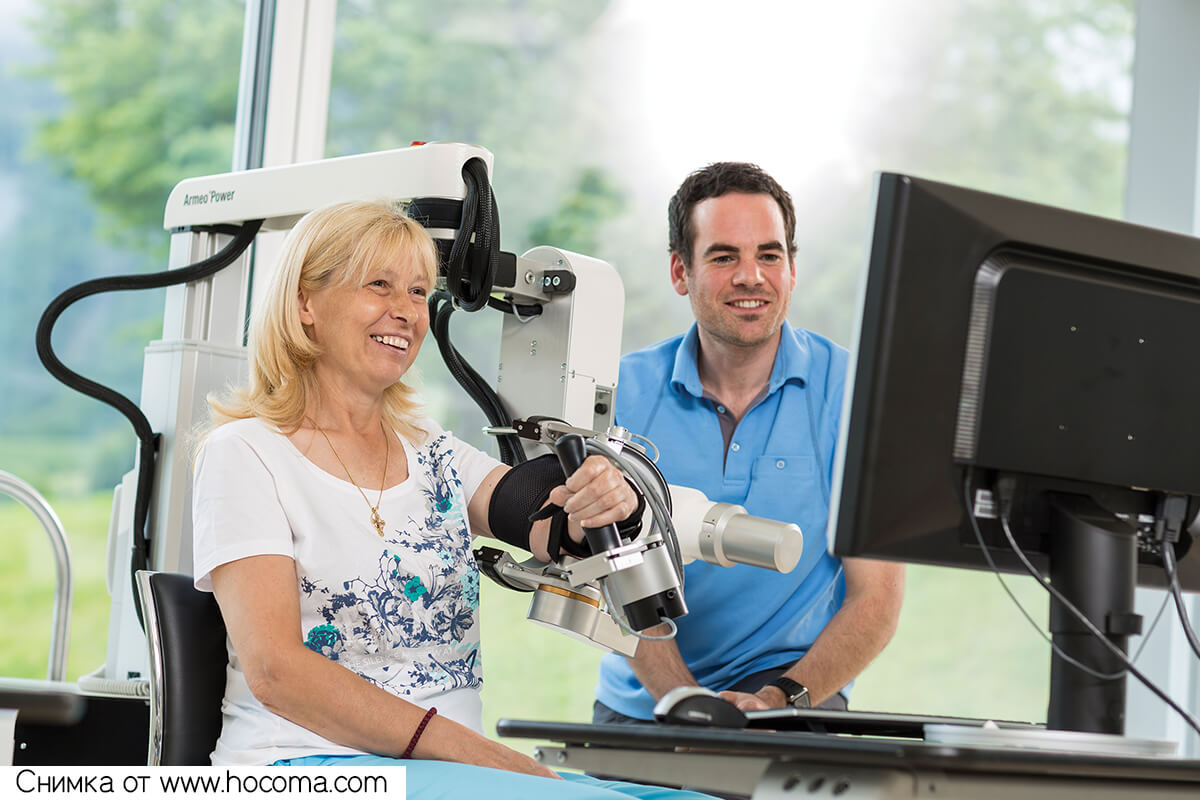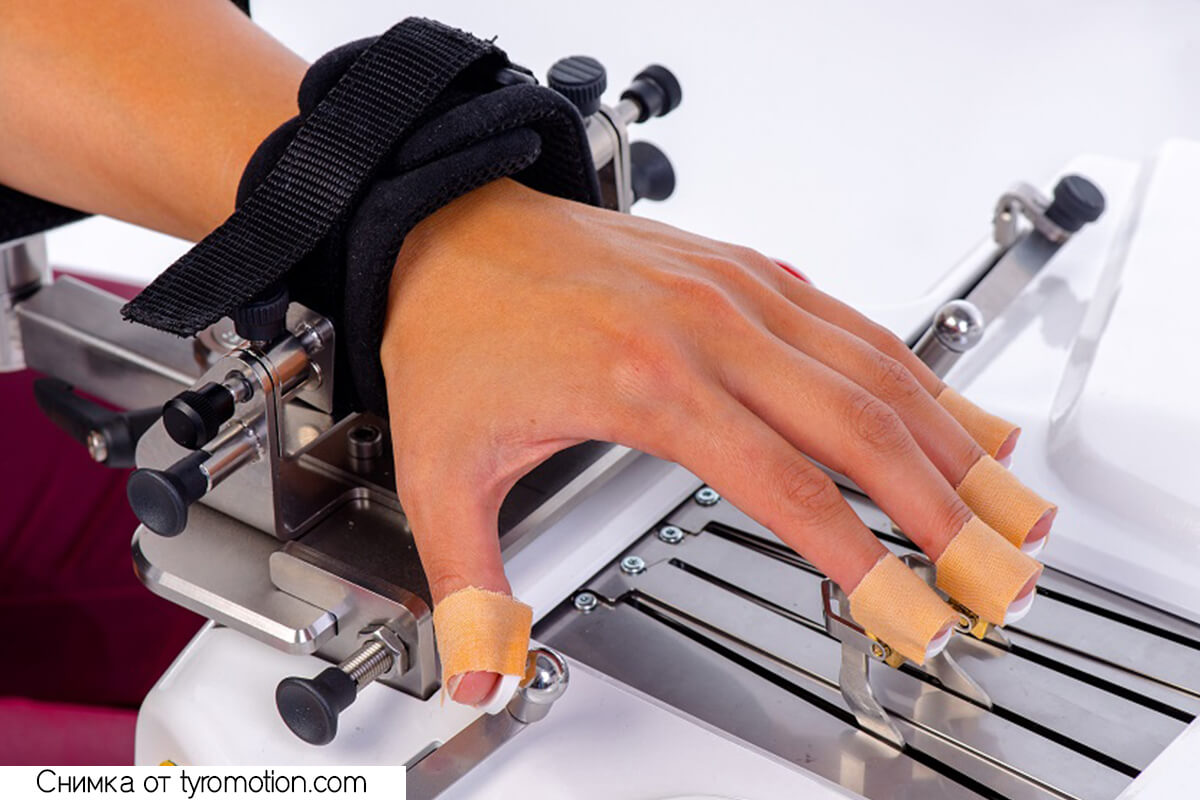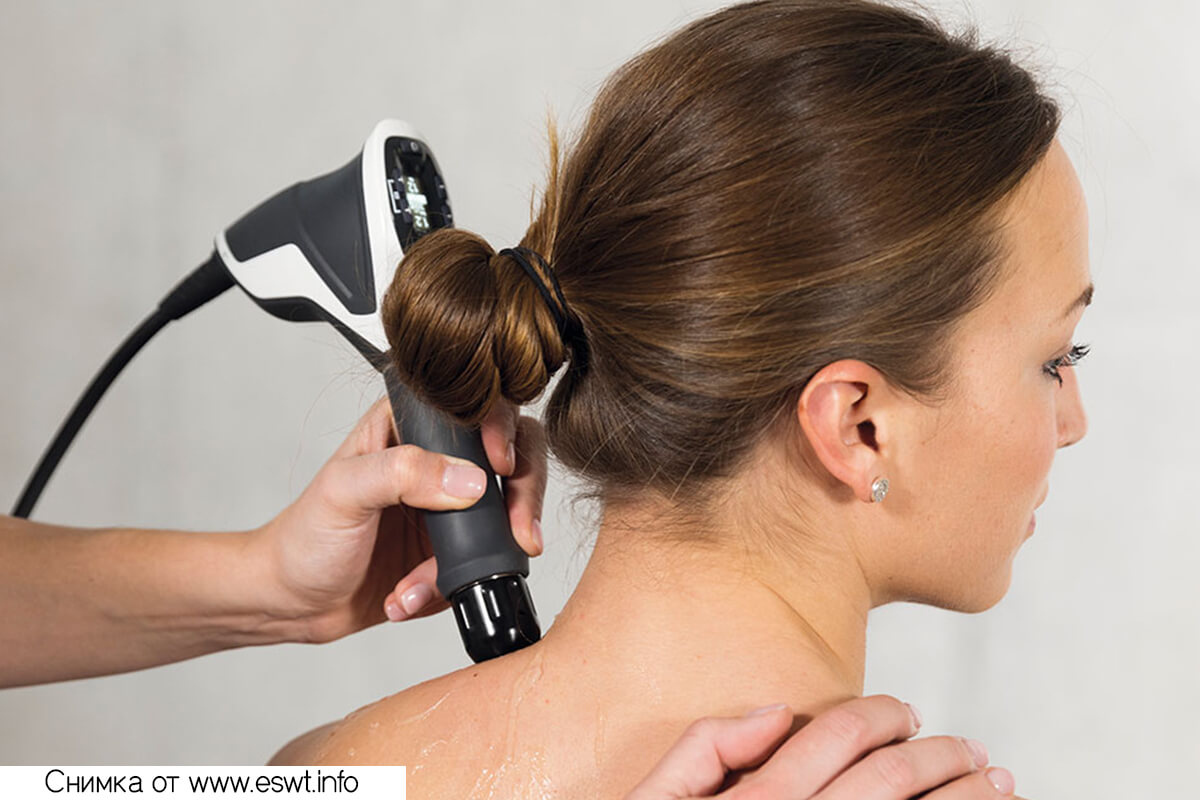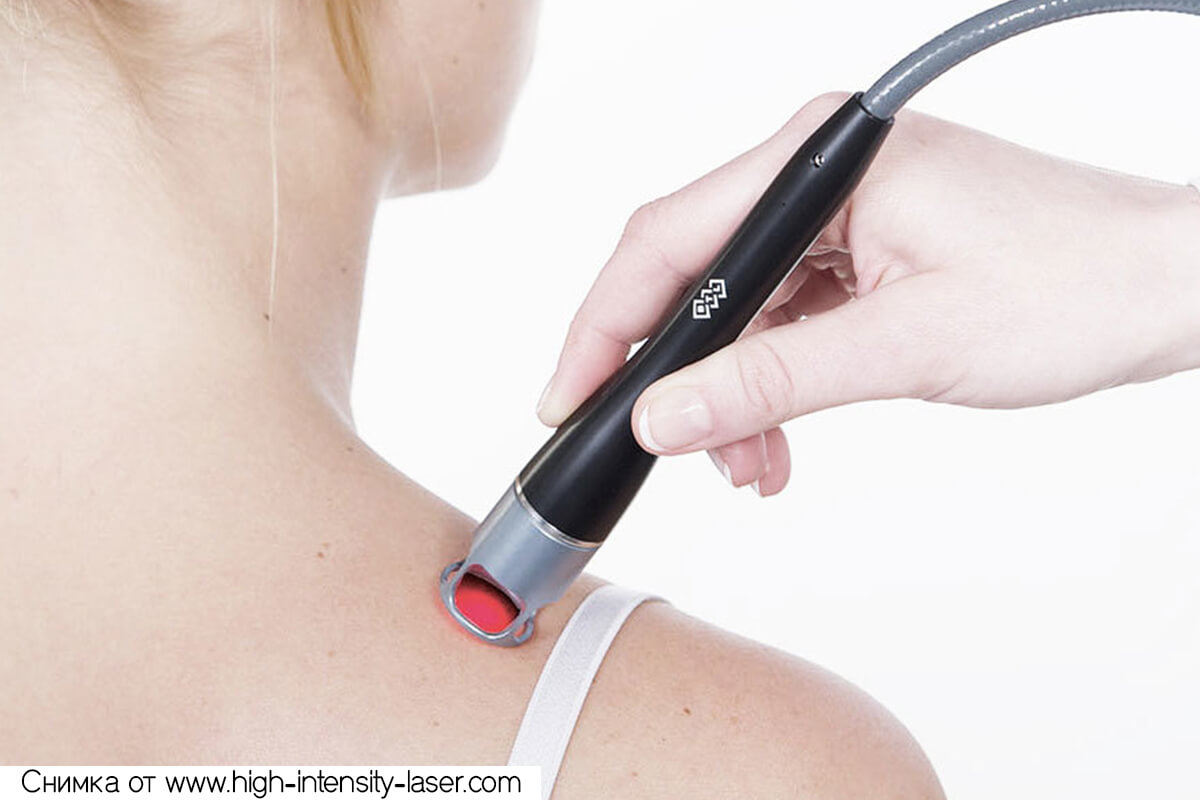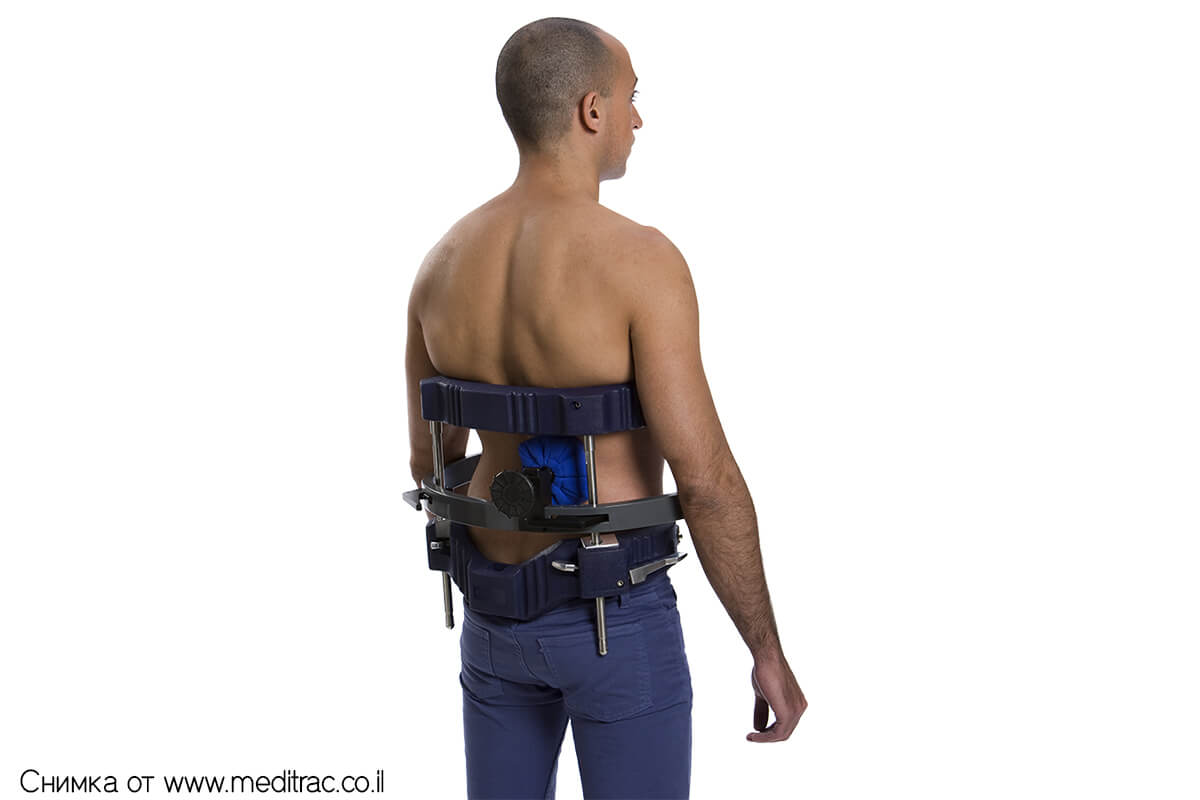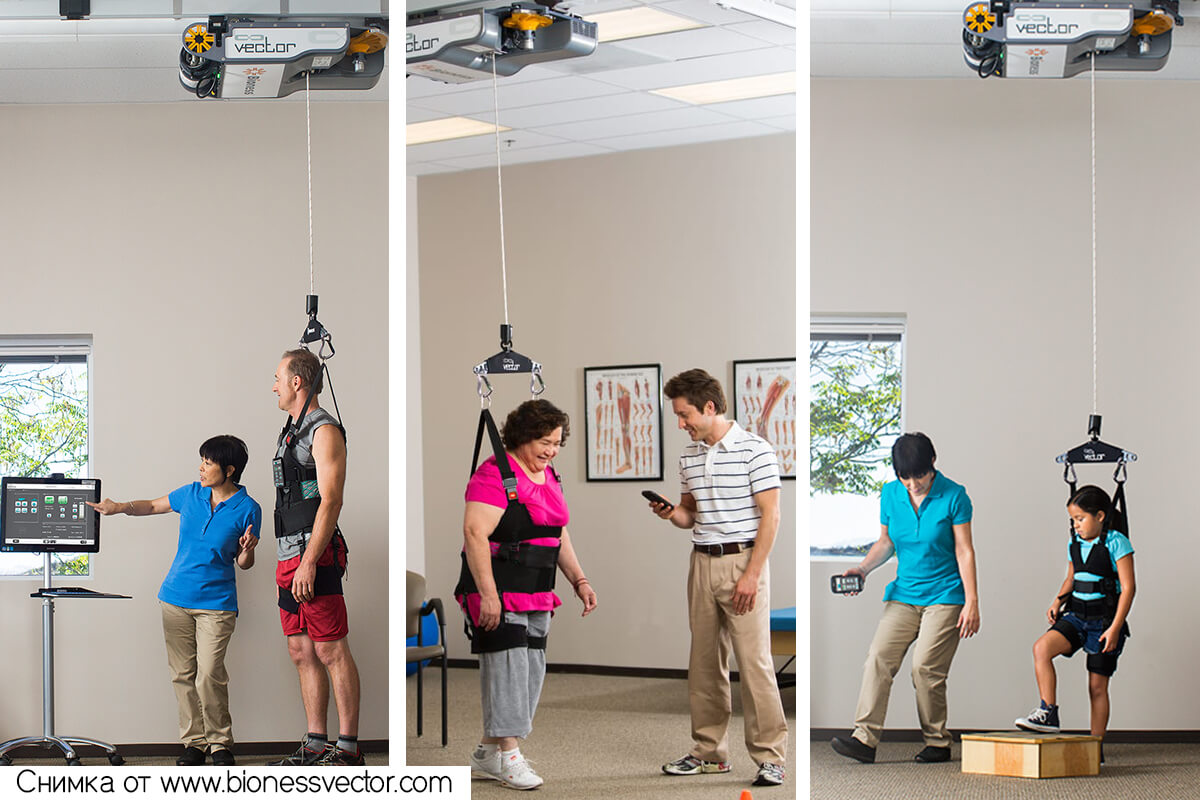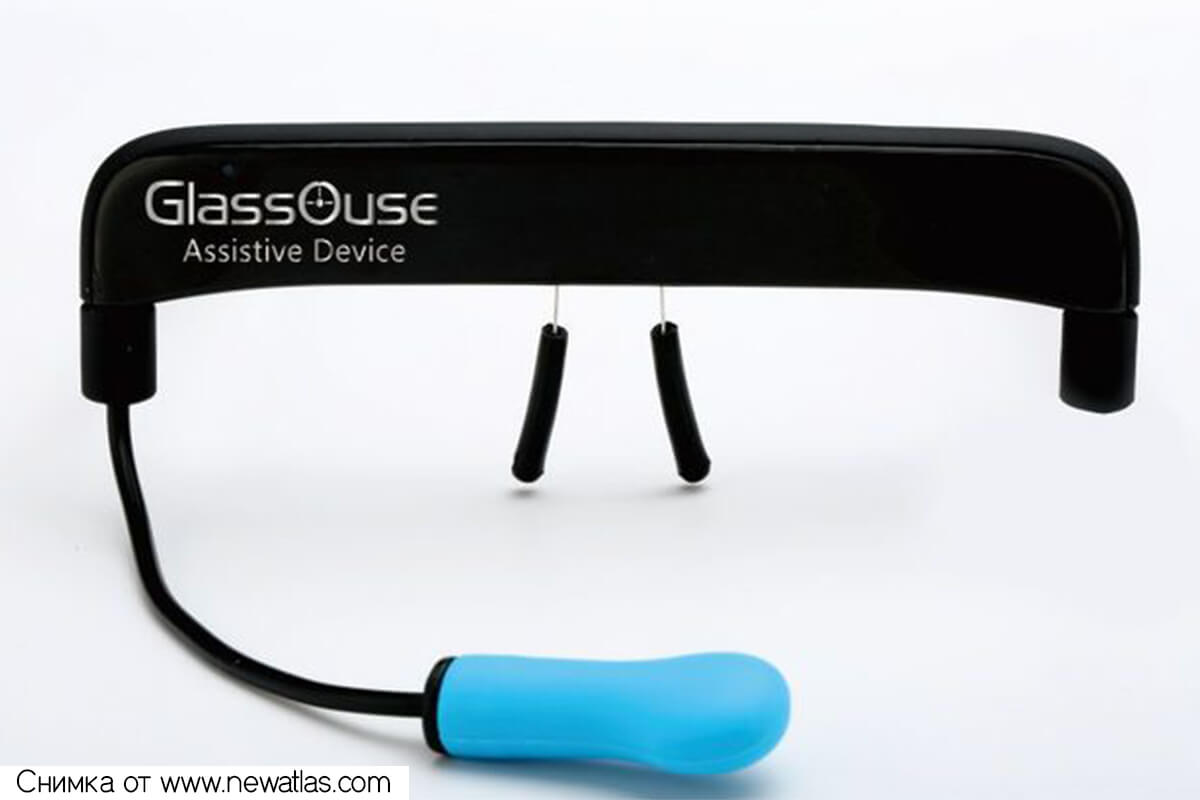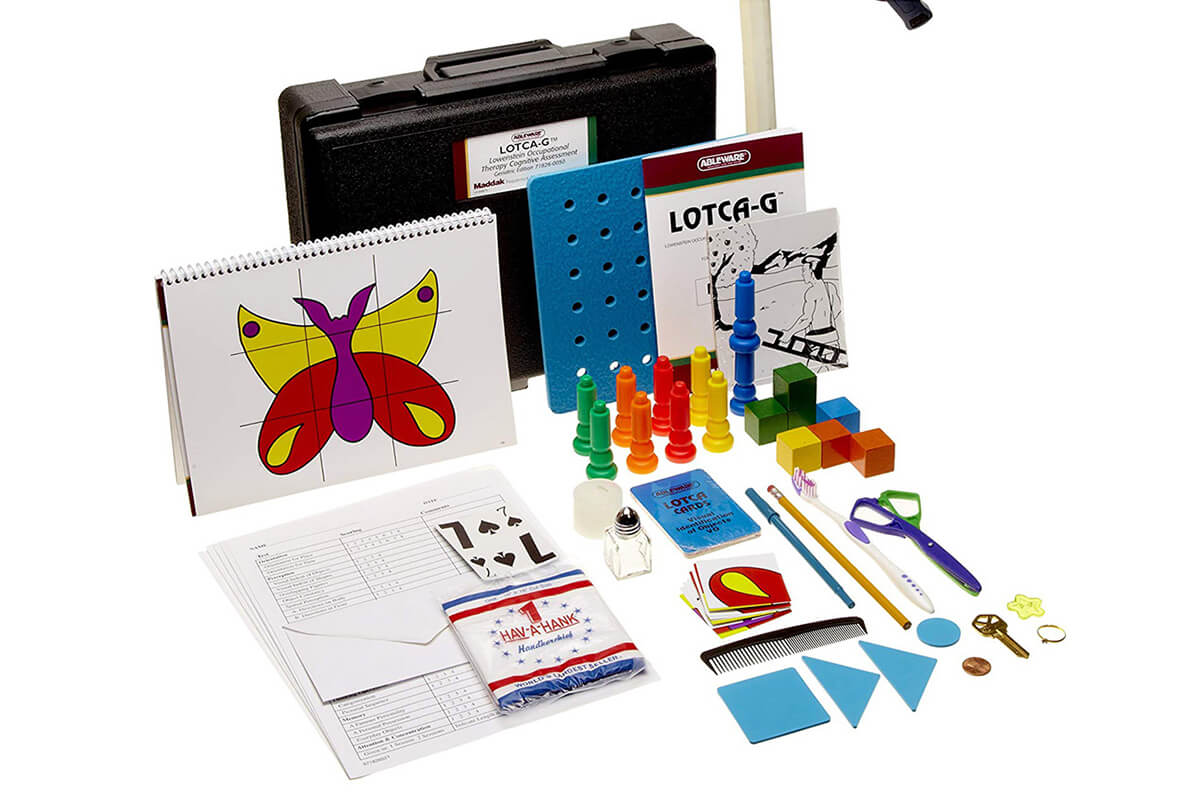Physiotherapy, also called physical therapy, is one of the oldest fields of medicine. Physicians such as Hippocrates and later Galen are believed to have been the first practitioners of physiotherapy. They were advocates of massage, manual therapy techniques and hydrotherapy as methods of treatment.
What is physiotherapy?
The name physiotherapy comes from the Greek words fysis-nature and therapeia-treatment, i.e. natural healing. Physical therapy is a complex of means and methodologies aimed at the prevention and treatment of various diseases. Physiotherapy is applied with the help of natural physical factors - water, sun, sea, healing mud, massage, movement and transformed physical factors - electric current, ultrasound, laser radiation, mechanical waves, etc. Physiotherapy acts through the neuro-humoral pathway - nerve impulses reach the brain and cause changes in the excitatory and inhibitory processes. A feedback to healthy structures is obtained, which supports the recovery process.
Physiotherapy can care for patients in all phases of recovery, from the initial diagnosis to the recovery and prevention phase. Physical therapy can be used alone or to support other treatments.
Some patients are referred to physiotherapy by their GP for continued treatment, but others self-refer to physiotherapy as their primary treatment method.
Main objectives of physiotherapy:
- In the early and acute phase - the aim of physiotherapy is to have a curative effect and to prevent the progression of the pathological process and its complications.
- In the recovery phase - Here, the purpose of physiotherapy is to support and accelerate the healing process by stimulating the body's immune and protective forces.
- In the chronic phase - in this phase, the aim of physiotherapy is to provide supportive treatment, to achieve maximum functional fitness of the patient and to prevent disability.
When is physiotherapy applied?
Usually, treatment through physiotherapy is strictly individual and tailored to the patient's health problems, age and health history. The individual medical approach is the key to obtaining the desired results.
Depending on the condition of the patients, physiotherapy is most often applied for:
- pain relief
- improving motor activity
- preventing the development of serious complications in a number of diseases
- improving conditions in chronic diseases
Physiotherapy can be applied to a wide variety of conditions such as:
- Diseases of the musculoskeletal system - spinal curvatures, flat feet, fractures, luxations, distortions, contractures, tendonitis, pain syndromes, overuse disorders and others
- Rheumatological diseases - rheumatoid arthritis, Bechterew's disease, periarthritis, spondyloarthropathies, Osteoarthritis and others
- Diseases of the central and peripheral nervous system - stroke, multiple sclerosis, Parkinson's disease, Huntington's disease, cerebral palsy, spinal cord injuries and trauma, radiculitis, shoulder-arm syndrome, disc herniation, polyneuritis, pain syndromes, pareses, peripheral nerve injuries, etc.
- Diseases of the craniocranial nerves - trigeminal and occipital neuralgia, facial neuritis
- Functional diseases of the nervous system - главоболие, migraines, insomnia
- Surgical diseases - soft tissue injuries, panarrhythmias, limb amputations, cicatrix, atonic and atrophic wounds, mastopathy
- Oncological diseases - postoperative recovery programs, recovery period after chemo and radiation therapy, lymphodema (lymphatic stasis)
- Diseases of the cardiovascular system - myocardial infarction, heart failure, varicose veins, Bürger's and Raynaud's disease, hematomas, etc.
- Diseases of the respiratory system - asthma, COPD, cystic fibrosis, pneumonia, etc.
- Childhood diseases - CEREBRAL PALSY, Down syndrome, polyneuritis, spinal muscular atrophy, flatfoot, motor retardation, etc.
- Ear-nose-throat diseases - acute and chronic rhinitis, sinusitis, tonsillitis and otitis
- Gynecological diseases - dysmenorrhea, premenstrual syndrome, inflammatory diseases, preoperative and postoperative physioprophylaxis of adhesions
- Diseases of the genitourinary system - urethritis, cystitis, prostatitis
- Skin diseases - acne, eczema, psoriasis, rosacea, herpes zoster, herpes simplex
- Urological diseases - chronic prostatitis, incontinence and others
- Endocrine-exchange diseases - diabetes mellitus and its complications, obesity
- Sports injuries and others
Very important in the conduct of physical therapy is the determination of the rehabilitation potential of the patient. This is a complex assessment, which includes somatic indicators, both of the main and concomitant diseases, functional assessment of the musculoskeletal system, psychological assessment, social, residual work capacity assessment. It allows to a large extent to predict the timing and size of recovery and planning specific and realistic tasks for each patient.
Basic rehabilitation principles:
- Rehabilitation should begin as early as possible. Compliance with this requirement ensures the prevention of complications that occur in a number of diseases.
- The subject of rehabilitation must be viewed as a whole person.
- The application of the rehabilitation program should be done with a clearly defined goal.
- Rehabilitation should always be comprehensive.
- The entire rehabilitation process should be based on good planning, both in terms of the treatment team and with the choice of rehabilitation tools.
- For the success of the rehabilitation program, the active cooperation of the patient and his relatives is of particular importance.
- After completion of all stages of physiotherapy, the patient should remain under observation for periodic assessment of his condition and maintenance treatment.
Rehabilitation is a continuous process in which 3 main types can be distinguished:
- Medical - aims to restore the biological health of the body. All medical means enter into it, and at different stages their importance differs.
- Social rehabilitation - aims at optimal integration of the individual into society. It is related to problems concerning living conditions and social security.
- Labour professional - is aimed at providing the injured person with work, based on a comprehensive assessment of his condition. This may be done by way of graded vocational employment or by way of retraining.
The main sections of physiotherapy include:
- Electrotherapy: Electrotherapy is a branch of physiotherapy that deals with the use of electrical energy for treatment, recovery and prevention. Electrotherapy is primarily used in physical therapy to relax muscle spasms, prevent and slow atrophy, increase local circulation, muscle rehabilitation and electrical muscle stimulation, and maintain and increase range of motion, managing chronic pain, post-traumatic acute pain and acute surgical pain, immediate post-surgical muscle stimulation to prevent venous thrombosis, for wound healing and rapid and non-invasive insertion of various drugs and substances into the body. Commonly used procedures are galvanization and electrophoresis, TENS, interferential current therapy, electrostimulation, magnetotherapy, ultrahigh-frequency currents, darsonvalization, etc.
- Light therapy: It is also known as phototherapy. Light therapy is a treatment in which visible, infrared and ultraviolet rays are applied for therapeutic purposes. They help to improve microcirculation, stimulate metabolic processes, strengthen the immune system, stimulate regenerative and renewal processes in the body, promote wound healing, relieve pain or reduce its intensity. Light therapy is extremely effective for winter depression. A popular form of it is laser therapy, which is applied to stimulate local and general reactions of the organism, as well as to normalize homeostatic processes at various structural and functional levels in the body. Laser therapy can be applied to many different conditions and diseases.
- Ultrasound therapy: The use of ultrasound waves to treat medical problems, especially musculoskeletal problems such as inflammation from injuries- sprains, tendonitis, bursitis. It has been a very popular therapy for decades. Its use is extremely widespread. In ultrasound therapy, special devices producing ultrasound waves are used to irradiate the affected body parts. A very popular procedure is the introduction of medicinal substances with the help of ultrasound - it is called ultraphonophoresis.
- Kinesiotherapy: The term is derived from the Greek word kinesis - movement and literally means healing through movement. The main therapeutic tool that kinesitherapy uses is physical exercise. The main aim of kinesitherapy is to improve and maintain the patient's state of health, prevent relapses and provide psycho-physical comfort. Kinesitherapy applies physical exercises and other means purposefully and with a proper methodological approach in order to improve health. Kinesitherapy is the only active method of treatment in which the patient participates fully in his/her recovery. This motivates the patient, gives him faith in his own strength and accelerates the recovery process. Active physical exercises are a strong stimulant for the body's recovery processes Kinesitherapy is the main element of physical therapy.
- Hydrotherapy: A part of physiotherapy that deals with the application of water, both internally and externally in its three aggregate states for therapeutic and prophylactic purposes. Also known as aquatic therapy, hydrotherapy includes such therapeutic procedures as sauna, steam bath, contrast showers, douches, abrasions, and also procedures using ice (cryotherapy) and steam (vapotherapy).
- Thermotherapy: This section of physiotherapy involves the use of gel, paraffin, sand, healing mud, peat, clay, air, etc. to bring heat to the body. Thermotherapy refers to all procedures related to general and local heating of the body. Thermotherapy dilates blood vessels and increases blood flow to the skin. This relaxes superficial muscles, reduces muscle spasm and reduces joint stiffness
- Balneotherapy: The application of the therapeutic and prophylactic effects of mineral waters. Mineral waters are one of the most significant factors of physical therapy and are used in the treatment of many diseases covering all organs and systems. Balneotherapy has been widely used for centuries, especially for the treatment of chronic diseases of the skin and musculoskeletal system.
- Calotherapy (peloid therapy): Part of physical medicine using different types of healing mud of natural origin. Healing mud is a natural product formed from organic and inorganic compounds involving various chemical, biological and microbiological processes in a liman lake. The mud is distinguished by its fine structure, high plasticity, alkaline reaction and smell of hydrogen sulphide. Through various application techniques, the healing mud is applied all over the body or on the injured part for curative or prophylactic purposes. The essence of mud therapy is the complex effect of all the factors of healing mud. The main factors are: thermal, chemical and mechanical. Peloids exert specific effects, mainly by a nerve-reflective pathway. They induce excitation of extero and intero receptors, resulting in complex neuroreflex reactions involving hormonal, endocrine, vascular mechanisms. The specific action is expressed in the activation of enzymes and biostimulators. Under the influence of mud procedures, significant changes in metabolism occur - tissue respiration increases, protein, fat and carbohydrate metabolism are stimulated.
- Climatotherapy: To this section of physiotherapy belong sea therapy (thalassotherapy), heliotherapy (sun therapy), aerotherapy and mountain climatotherapy. Climatotherapy is the use of climatic and meteorological factors for therapeutic and preventive purposes to strengthen the health of the body. The elements of the climatic and meteorological complex are the position of the terrain above sea level, barometric pressure, air temperature, precipitation, wind strength and direction, cloudiness and the intensity of solar radiation. When carrying out climatotherapy, the influence of the radiation properties of the soil, the features of the landscape, etc. are also taken into account. Steppe climate combined with acid-dairy therapy has been used to treat tuberculosis, semi-desert climate is favorable for the treatment of kidney diseases. Sea climate is indicated for the treatment of respiratory diseases, functional diseases of the nervous system, metabolic disorders, etc.; mountain climate has a strong effect on the respiratory and vascular systems, stimulates metabolism.
- Kinesiotaping: The method is a therapeutic technique of taping strips on the skin to relieve pain and facilitate lymphatic drainage by microscopically lifting the skin. This lifting affects the formation of curves in the skin, increasing the interstitial space and allowing a reduction in inflammation in the affected areas. The tapes can be applied in hundreds of ways and have the ability to reduce pain and inflammation, promote healing after surgery, optimize activity, prevent injury and promote good circulation and aid the body's natural healing process.
- Massage: The most pleasant and relaxing part of physical therapy for the patient. Massage is the therapeutic practice of manipulating muscles and limbs to relieve tension and reduce pain. Massage can be part of physical therapy or can be administered alone. It can be effective in reducing muscle pain, for various nervous system disorders and is often used to reduce stress.
- Acupuncture and acupressure: Acupressure and acupuncture are medical procedures that are borrowed from ancient Chinese medicine and are part of physiotherapy. They consist of applying pressure or applying special needles to certain points that are part of meridian pathways. These meridian pathways extend along the entire body. It is assumed that it is through them that energy flows through the body and that they are responsible for the regulation of the homeostasis of the human body, and thus maintain a person's state of health. Each of these meridians is composed of certain energy points that are responsible for the regulation of one or more organs.
This is not a complete list of all sections of physiotherapy, but it does represent some of the most commonly applied methodologies.
Each patient is treated individually, with a plan specific to him or her, applying one or more types of physiotherapy methods until the desired effects are achieved.
Rehabilitation aims through a wide range of physical means, in addition to medical, also social and occupational restoration of functional capacity, rehabilitation and work adaptation of the patient.
Risks of administering physiotherapy:
When the appropriate procedures are carried out by a specialist with proven experience and the necessary qualifications, after a thorough examination, questioning and, if necessary, tests of the patient, no unwanted side effects are expected from the physiotherapy treatment.
In general, the procedures performed within the physiotherapy treatment should bring comfort, pleasure and relief to the patients.
Depending on the type of procedure and individual patient characteristics, mild, often subjective, transient and in some cases predictable reactions are possible. If patients are warned in advance of possible mild side effects and ways to prevent them, patients should not experience significant discomfort.
In persons with pronounced skin sensitivity, a reaction (reddening of the skin, burning, itching, fast-transient rash) is possible with topical application of products containing medicines, vitamins, minerals, herbs and medicinal plants.
Questioning at the first meeting with the patient is essential to learn about their condition, individual preferences, expectations of therapy, presence of proven allergies, and other factors that may influence the optimal effectiveness of physical therapy.
With caution is approached in pregnant women, breastfeeding mothers, as well as soon after childbirth (some procedures are contraindicated for performance in these periods).
Contraindicated for physiotherapy treatment are:
- Patients with frequent recurrent bleeding, regardless of the cause, with the exception of hemorrhoidal.
- Infectiously and parasitically ill.
- Patients with malignant neoplasms undergoing surgery or other treatment or with metastases.
- Patients with cirrhosis of the liver.
- Patients with severe progressive forms of anemia and other blood diseases, regardless of etiology.
- Patients with mental disorders. Severe psychopathies and neuroses accompanied by severe depression.
- Patients with epilepsy.
- Patients with all forms of addiction - drug addiction, alcoholism.
- Cardiac patients in the period of decompensation III and IV degree.
- Patients with coronary insufficiency with frequent stent attacks, heart failure.
- Patients with renal failure.
In order to reduce the risks of possible side effects resulting from the physiotherapy, it is recommended that the patient consult the relevant specialist - physiotherapist, neurologist, orthopaedist, paediatrician, rheumatologist, cardiologist, pulmonologist, etc. - in advance and that the appropriate therapy is carried out in accordance with his/her recommendations.
The latest in the world of physiotherapy and rehabilitation:
[/vc_column_text][vc_empty_space height=“10″][vc_single_image image=“7574″ img_size=“full“ vstudio_css_animation=““][vc_empty_space height=“10″][vc_column_text el_class=“special-bullet“]Съвременната физикална терапия се развива с изключителни темпове през последните години. Навлизат редица нови фактори с високоефективен терапевтичен ефект. С развитието на технологиите се постига изключителен напредък при лечението и диагностиката на различни заболявания.
Robotic devices and virtual reality are now an essential part of modern medicine. Rehabilitation is one of the areas where robotic technology is used. Recovery can be accelerated with the help of various robotic devices especially in neurological rehabilitation. When these robotic techniques are used in combination with traditional physiotherapy, better results can be achieved. One of the most common robotic rehabilitation devices is Locomat walking robot.
Locomat walking robot
What is Locomat?
Robot Locomat is an automated rehabilitation system used to restore and improve walking ability after brain and spinal cord injuries, strokes, and loss of walking ability due to neurological or orthopedic conditions. The robot carries the majority of the patient's body weight, allowing the joints to move easily and aims to restore a normal walking pattern.
How it works Robot Locomat?
The patient is elevated on the device by multiple belts that are placed on the body. Once all body weight is transferred to the device, the patient's legs are placed on the robotic treadmill. The patient begins to walk, partially transferring weight to the walking belt. The robot detects and enhances voluntary movement during walking using sensors. Meanwhile, the patient can observe their walking in the mirror or on the virtual reality screen in front of them.
What are the advantages of treatment with Robot Locomat?
The most important feature of Walking robot Locomat is that it makes movements similar to normal walking and constantly stimulates centers in the brain. In this way, the patient's recovery process is accelerated and his walking pattern develops almost naturally. Thanks to the long and intensive training sessions, rapid progress is achieved that cannot be matched in manual therapy.
The locomat eases the work of the rehabilitator, who can easily monitor and assess the patient's activity. The walking pattern and support forces can be adjusted individually according to the patient's needs to adapt to functional training.
Movement is demonstrated to the patient through visual feedback on the screen and visual support for the treatment.
With computer-assisted assessment, it is possible to obtain easy measurements of the patient's condition.
If necessary, one can easily switch from automatic therapy to manual gait training.
Who can benefit from treatment with Walking robot Locomat?
The main goal of robotic therapy is to improve walking ability. To this end, treatment with Locomat walking robot can be used for many neurological and orthopedic disorders that impair the ability to walk, especially brain and spinal cord injuries, stroke, patients with multiple sclerosis, cerebral palsy and other neurological disorders.
Can children benefit from robotic therapy with Locomat?
Thanks to Walking robot Locomat, children with impaired walking function due to cerebral palsy, craniocerebral trauma or other neurological disorders can be treated. A special device developed for children provides optimal comfort and compatibility for these patients, making it possible to achieve the same functional benefits as in adults. The Locomat pediatric walking robot has been used successfully for the rehabilitation of pediatric patients with walking disorders since the age of 4.
Treadmill AlterG
AlterG is an anti-gravity treadmill using NASA-Air Pressure technology. It allows people to move in new and pain-free ways to improve mobility, improve health and increase physical activity.
AlterG combines NASA's patented differential air pressure technology, an accurate air calibration system, and real-time information in conducting the rehabilitation program. AlterG uses a compressed air chamber to evenly reduce gravity and body weight, allowing patients and athletes to move without restriction and pain. No other technology offers so much freedom, control and flexibility.
DRX-9000 - spinal decompression
What is DRX-9000-spinal decompression?
DRX-9000 spinal decompression therapy is a non-surgical treatment method used for patients with disc herniation in the cervical or lumbar spine during physical therapy. The research behind the decompression system was essentially inspired by space programs. In NASA space research, it has been observed that the pressure on the astronauts' spine is reduced, disc spaces widen, and back pain is relieved in the non-gravity environment. The DRX-9000 decompression device, developed from this experience, is used in the treatment of hernias without surgery. The device is used in many countries around the world, especially in America.
How does the DRX-9000 treatment work?
The DRX-9000 device affects the narrowed disc space and shows the effect of opening the space between the upper and lower vertebrae. When the space between the vertebrae widens, the negative pressure creates a vacuum effect allowing the bulging disc to move inward. The reduction in pressure nourishes the damaged disc and healing begins. The fluid, oxygen and nutrients in the disc contribute to the healing of the damaged tissues. As the pressure between the vertebrae decreases, the herniated disc pulls back, the nerve relaxes.
What are the advantages of DRX therapy?
The DRX-9000 device provides more effective treatment by reducing intradiscal pressure to negative values. It works to provide maximum effect on the problem disc. In classic traction devices, as the entire spine is pulled with equal load, the body's defense mechanisms are activated and the spinal muscles contract. This can reduce the effect of traction. In addition, it can cause the spinal spaces in the normal discs to open up. In the DRX-9000 system, the body's defense mechanisms are not stimulated as controlled traction is applied with a logarithmic curve to the spinal space where the problem exists. This effectively creates negative pressure in the targeted damaged discs.
When can I apply DRX-9000 treatment?
- Lumbar hernias
- Hernias on the neck
- Sciatica
- Stenosis of the spinal canal
- Back joint pain
- Spinal calcifications (degeneration)
- Patients with failed lumbar hernia surgery
In which cases is DRX-9000 therapy not administered?
DRX-9000 treatment is not used in cases such as vertebral fractures, severe bone resorption, sequestered lumbar hernias, spinal tumors, inflammatory diseases of the spine. Therapy cannot be applied in pregnant women either.
How is DRX-9000 treatment administered?
Treatment begins with the wearing of corsets and appropriate belts, determined according to the patient's problem area. The patient is taken to the platform at the base of the device, their weight is measured and the treatment programme is introduced. The program is adjusted according to the affected disc region. The required angle is given to the neck or waist area and the computer controlled gravitational force is applied to the target range with the specified load. After 30 minutes of treatment, cold compresses and ongoing therapy are applied.
If the patient has a muscle problem, various physiotherapy methods such as manual therapy, ultrasound, spinal massage and laser can be added to the treatment. The duration of treatment can vary between 15 and 20 sessions depending on the patient and the progress of the condition.
What is the success rate of DRX treatment?
Treatment with DRX-9000 has a success rate of 85-95% in patients with lumbar and cervical spine hernias that are near the surgical stage. The success of the treatment lasts a lifetime, with the cooperation of the physician and patient, regular exercise recommended to the patient after treatment and a healthy lifestyle.
Andago Assisted Walking System
The Andago Walking Support System is one of the most important robotic rehabilitation devices used in the treatment of neurological disorders, orthopedic problems, walking difficulties after cardiovascular disease and balance problems. In the Andago system, the patient's body weight is supported by a harnessed device and the risk of falling is minimized. Of course, while this walking training is taking place, he is under the supervision of a specially trained for this purpose, rehabilitation therapist.
Sensors in the front of the robot make the system extremely safe. With the Andago system, training in walking can take place in the patient room, in the corridors of the clinic and a more mobile and varied treatment model can be deployed for the patient. The most important feature of the system is that it offers the possibility to train the patient in walking on both smooth and uneven surfaces. This feature increases the patient's walking adaptation.
The Andago system is used in the treatment of neurological disorders, stroke treatment, spinal cord injuries, multiple sclerosis patients, Parkinson's patients and patients with balance problems in walking. In addition, after any prosthetic surgery, any tendon surgery, for ankle injuries and many lower extremity surgeries, the Andago system can be used if the patient has difficulty walking. Andago is an appropriate choice for treatment after cardiovascular disease and previous surgeries.
Armeo therapy
What is Armeo therapy?
Armeo is a method used by physiotherapy for dysfunction or paralysis of the upper limbs as a result of diseases of the central nervous system (for example, stroke).
This is a method of treatment that restores motor skills in the arm and shoulder, improves the patient's condition, improves strength and stimulates the biological structures that reorganize the central nervous system.
Amadeo Robot Arm-Fingers
What is the Amadeo Robot Arm-Fingers?
The Amadeo system is the only rehabilitation device that allows each finger, including the thumb, to work individually or together. It is used for motor function disorders in the distal parts of the upper limb.
The device mimics the natural, grasping movement of the patient's hand. The movement and force can be adjusted according to the patient's needs. During treatment, the patient sits comfortably in front of the device. The hand is supported and the fingers are attached to the device. The patient is thus prepared for the automatic sequence of movements.
Passive or active movements are performed. They are recorded on the device using sensors. The most important feature of this system is that it allows postoperative rehabilitation of patients who have undergone hand surgery. Hand rehabilitation with the robotic system is very important as the success rate of surgeries decreases in patients who have not had adequate rehabilitation after hand surgery. The Amadeo Robot has been used successfully in the treatment of paralysis due to brain and spinal cord injuries or nerve cuts in the hands.
Shock wave therapy ESWT
What is ESWT?
ESWT (extracorporeal shock wave therapy), in short, "shock wave therapy". This is a new method of treatment used by physiotherapy in which generated strong sound waves are applied to a desired area of the body, using a special elliptical steel tip. The working principle is based on the propagation of the shock waves to a great depth thus achieving instant and long lasting pain relief for the patient. The method is used for the treatment of orthopaedic diseases such as tennis elbow, heel spur, shoulder pain, pseudoarthrosis. It offers the patient a non-surgical treatment without cortisone. The resulting shock waves are called high energy. These devices deliver 10 times the energy of ultrasound devices in a very short time (1 microsecond) in the field of application. ESWT treatment provides permanent improvement with treatment of the underlying causes of disease. Because ESWT therapy uses the body's own healing mechanisms, once the disease is cured, the chance of relapse is low.
Hill therapy
What is Hill Therapy?
High-intensity laser therapy is safely used in modern medical centers and hospitals around the world in physical therapy and rehabilitation. Gallium aluminium arsenide (GaAlAs) diodes and photobiostimulation with power generation devices with the latest generation of class 4 laser technology. Photobiostimulation, which is produced by absorbing laser waves by cells, creates the desired changes in the target cells.
What are the differences with other lasers?
High intensity laser therapy differs from cold laser therapy. It is much stronger than a cold laser, allowing it to reach deeper into the cell tissue and treat the surrounding tissue to provide longer lasting results.
How does Hill Therapy work?
Hill therapy achieves high-intensity effects due to its anti-inflammatory, anti-inflammatory and analgesic mechanisms. It helps regenerate nerve cells and improves communication with the brain. Softens scar tissue so fibers can stretch to allow more movement. Chronic pain goes deep into the internal organs to alter or reset memory so that the sensation of pain is suppressed.
In which diseases is it used?
Osteoarthritis, soft tissue rheumatism, rheumatoid arthritis, healing of burns, decubitus ulcer, tendonitis and bursitis, sports injuries, radiculopathy and discopathies, chronic osteomyelitis, diabetic neuropathy, epicondylitis, dental diseases, trigeminal neuralgia, postherpetic neuralgia, bone syndromes, can be used in the treatment of scars.
In which situations is it not used?
Hill therapy should not be applied to uncovered fontanels in children, pregnant women, areas near cancerous lesions, varicose veins, and inflamed areas. It should be applied very carefully or not at all in those diagnosed with epilepsy and patients with pacemakers. A laser aimed at the eye from a distance of less than one meter is concentrated by the cornea and damages the eye. The patient and doctor should wear goggles.
Does the procedure cause pain?
No, no pain is felt. It does not cause hair loss, spotting of the skin and burns on the skin. The light from the laser feels like heat on the body. Many patients find the warming sensation very relaxing.
How is it applied?
Hill therapy can have an effect after the first session. Depending on the nature of your condition, the timing of the laser and the dose decision are determined by the specialist. Generally, a session can range between 10 and 30 minutes. While 1 to 5 sessions may be sufficient for acute conditions, treatment can last up to 6-12 sessions for chronic conditions. With high intensity laser therapy, 80% has been successful in improving function and significantly reducing symptoms.
Vertetrac
What is Vertetrac?
Vertetrac is a device used in physical therapy to perform traction. Traction is a form of treatment that is usually applied to the neck and low back. Traction is applied to lengthen the muscles and soft tissues around the vertebrae, as well as to increase spacing in the joints. As a result, discomfort in the spine disappears or decreases. The patient's mobility is increased by lengthening the muscles and soft tissues and widening the joint spaces, relaxing the nerves in the spine and reducing muscle spasm.
What is the difference between Vertetrac and the classic traction method?
Vertetrac is an innovative and effective treatment method used in physiotherapy. Unlike conventional methods, it provides three-dimensional traction by applying vertical, horizontal and diagonal force. According to the spinal problems, symmetrical or asymmetrical adjustments can be made. Therefore, it is more effective than conventional traction therapy. The mechanism is compact, portable and easy to insert. During treatment, patients are not bedridden and can walk and sit. During treatment, the patient is encouraged to walk to increase circulation in the disc and speed healing of problem areas.
When is Vertetrac used?
- Cervical and lumbar hernia
- Facet syndrome
- Neck and lower back pain
- Idiopathic scoliosis (in children, adolescents and adults)
- Calcification in the cervical and lumbar spine
- Torticollis
- Back and neck pain due to occupational disease
In what situations is Vertetrac not used?
- Cauda Equina Syndrome
- Infections
- Tumors
- Fractures
- Inflammation
- Jaw and collarbone problems
- It is not administered to patients who have undergone heart surgery as it puts pressure on the chest area.
- Caution should be exercised in patients with asthma.
- Caution is also required in patients with inguinal and umbilical hernias.
- The treatment lasts from 12 to 15 sessions. Complaints begin to decrease between the 5th and 7th session.
Vector Gait System
Vector Gait System / Physiotherapy Tracking and Safety System
The Vector Gait & Safety® System allows rehabilitation teams to increase patient mobility while preventing falls and reducing the risk of injury. From back and spinal cord injury to amputation and orthopedic injury, Vector provides a customized gait training solution for patients at all levels. Utilizing dynamic body weight support, the Vector System allows patients to perform activities prior to actual walking, practice overhead gait rehabilitation, and perform a variety of training.
Vector is designed to provide the rehabilitation department with a safe therapeutic experience coupled with complete documentation of outcomes.
What is this system?
The technology is based on a special rail mounted on the ceiling, to which a controlled rope is attached to support the patient during walking. Two straps are connected to a special suit, which in turn fix this rope. The system is computerised and can remember and correct a person's movement. The program can be created according to the growth, weight and individual cognitive characteristics, and all parameters can be stored in a database.
Head Mouse
The Head Mouse is a device allowing people with disabilities and those who need rehabilitation after severe injuries to access information, draw, watch movies, read through video, play video games and even work with graphic editors.
With all these features, the Head Mouse is used by physical therapists in occupational therapy - with the help of her doctors, positive results are achieved, as the device helps in the psychological rehabilitation of people with disabilities.
This unique software requires no special installation and is recognized by computers when connected to a USB port.
Doctors of rehabilitation centers teach their patients how to use this device. These professional therapists need to correctly determine the position of the patient, the computer and the camera. Then the program is adjusted according to the patient's capabilities and the specifics of his movements.
Loewenstein Occupational Therapy Cognitive Assessment (LOTCA)
LOTCA is a series of tests assessing generic cognitive abilities. The Lowenstein Occupational Therapy Cognitive Assessment is a series of tests that assess generic cognitive abilities.
It is divided into five main areas:
- orientation - knowing what day, date, time it is
- visual perception - recognizing objects and shapes and understanding their purpose
- spatial perception, which is to know where their body is in space
- a thinking organisation that assesses generic skills but with an emphasis on categorisation and classification of objects
- visual motor organization, which refers to reconstructive skills
LOTCA може да помогне да се идентифицират силните и слабите страни в различните области, да се измери учебният потенциал и да се признаят стратегиите за мислене, както и да се помогне за идентифициране и подобряване на информираността на хората за когнитивните им трудности.[/vc_column_text][vc_empty_space height=“20″][vc_column_text]
Hospitals in this area
- Acıbadem Mehmet Ali Aydınlar Atakent University Hospital
- Reap Health Group
- VM Medical Park Hospital, Pendik, Istanbul
- Istinie University Hospital, Istanbul
- Acıbadem Bakırköy Hospital Istanbul
- American Hospital
- Acıbadem Maslak Hospital
- Memorial Hospital, Shishli, Istanbul
- Memorial, Ataşehir, Istanbul
- Liv Hospital
- Medical Park, Gebze
- Acıbadem Kozyatağı Hospital
- Acıbadem Eskişehir Hospital
- Acıbadem Altunizade Hospital
- Memorial, Antalya, Turkey
- Memorial Hospital, Diyarbakir
- Acıbadem Taksim Hospital
- Istinye University Hospital, Medical Park, Gaziosmanpasa, Istanbul
- Acıbadem Dr. Şinasi Can (Kadıköy) Hospital
- Acıbadem International Hospital
- Memorial Hospitals Group
- Memorial Hospital, city of Dijle
- Belt Hospitals
- Medical Park Hospital, Ordu
- Acıbadem Hospitals Group
- VM Medical Park Hospital, Floria, Istanbul
- Bahceliyevler Memorial, Istanbul
- Medical Park Hospitals Group
- Medical Park Hospital, Trabzon city
- Memorial Medstar Hospital, Antalya
- Memorial Hospital, Kayseri
- Memorial Hospital, Hizmet, Istanbul
- Memorial Hospital, Ankara, Turkey
- Medical Park Hospital, Bahceliyevler, Istanbul
- Acıbadem Fulya Hospital
- Medipol Mega
- Romatem Hospitals Group
- Acıbadem Bursa Hospital
- Acıbadem Kocaeli Hospital
- Medical Park Hospital, Gaziantep city
- Chorlu Watan Multidisciplinary Private Hospital
- Memorial Medstar Hospital, Topçular, Antalya
- Medical Park, Batman City
- Acıbadem Bodrum Hospital
- Medical Park, Ankara city
- Acıbadem Kayseri Hospital
- Medical Park Hospital, Bursa
- Acıbadem Hospital Adana
- Acıbadem Ankara Hospital
For more information, you can call +359895770869.

